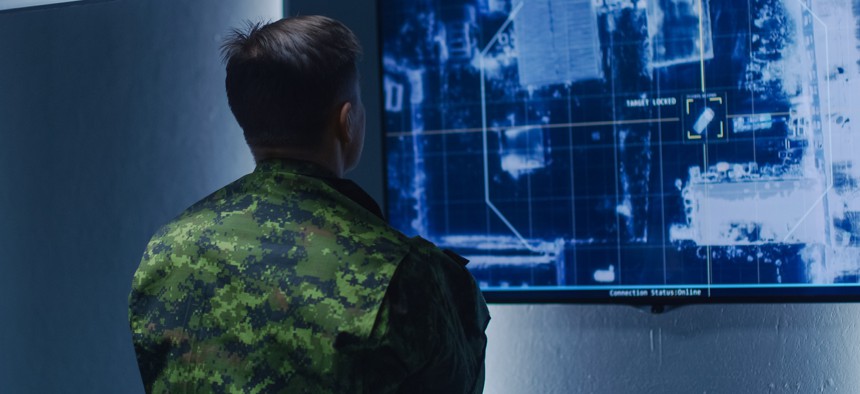sponsor content What's this?

iStock/gorodenkoff
Smart Sensors are the Future of Ocean Surveillance
AI-backed sensors can provide warfighters with more actionable, big-picture data.
Presented by
Leidos

Across sectors and around the world, data has become central to nearly everything, including warfare. In the global race to advance naval capabilities on and under the ocean surface, countries like the United States, Russia and China are expanding and exploring military technology beyond traditional tools, like satellite and radar, in order to harness more accurate, actionable information. In fact, the Space and Naval Warfare Systems Command (SPAWARSYSCOM), recently changed its name to the Naval Information Warfare Systems Command (NAVWARSYSCOM) to emphasize that it recognizes information as a “fundamental element of warfare, an essential concept of the Navy’s strategy, and a warfare area that transcends the traditional domains of air, sea, land, and space,” Rear Adm. Christina Becker, head of the organization, said in a recent press release.
As the need for more — and more precise — data grows, traditional sensor technology still struggles to collect sub-surface level information, says Chuck Fralick, vice president and chief engineer of Maritime Systems Division at Leidos. And, as the amount of critical information grows, so does the need to consolidate and connect ocean surveillance data into a cohesive, actionable picture, particularly when it comes to command, control, communications, computers, intelligence, surveillance, and reconnaissance (C4ISR) systems.
“Today’s maritime environment is increasingly connected,” Fralick says. “We need to be well-informed, making sure that we don’t suffer any technological surprises. Putting smart technology in and along underwater vessels to collect information helps us equip our sailors and vessels to perform vital jobs in the most efficient way.”
Enter new artificial intelligence-based sensors that can intuitively expand and revolutionize C4ISR capabilities below the ocean surface.
Sensors play an increasingly integral role in anticipating threats and force protection. By leveraging machine learning, these new sensors allow warfighters to better detect and interpret information, which can, in turn, prompt faster, more accurate response.
“Improved sensor capabilities allow warfighters to look at the same information, but from multiple angles or sensor modalities, and then infuse that data into their decision-making,” says Dr. Tim Barton, chief technology officer of the Defense Group at Leidos. Barton notes that the most crucial C4ISR innovations at the moment incorporate distributed sensing and surveillance. “We’re looking to do more with less — using less detectable sensors and technology integration, while at the same time tapping high-powered signal processing to integrate and process that data can provide defense decision-makers with a clear, critical advantage via a smaller footprint.”
Sensors Leverage AI to Tap into More Comprehensive and Actionable Surveillance Data
By utilizing a growing number of AI-backed sensors, warfighters engaged in maritime conflict can glean greater insights, improve efficiency, and reduce risk as machine-learning-backed surveillance tools can better combine disparate data, enabling a more robust, more accurate view of the threat and the landscape. By automatically identifying nuances in information—a task previously performed manually with traditional tools—first responders can move more quickly, armed with more accurate insights than ever before.
“If we want to cover the ocean effectively and surveil properly, we’re going to have to embrace the idea and integration of more sensors,” says Fralick. “And that doesn’t have to translate into large investments; these are tiny, adaptable sensors that can be dropped anywhere, with low risk.”
Moreover, in an actual threat or battlefield environment, placing information-gathering assets as close to the conflict zone as possible is crucial to assessing the situation and protecting soldiers. These capabilities are designed to minimize risk for warfighters and high-investment vessels in potentially hostile environments. Smaller, smarter, more malleable sensors on autonomous vessels can collect that data instead.
“You can put your smart sensors in really critical and high-pressure areas, up close and personal with your adversary,” says Barton. “If somebody disables or takes it, they don’t get anything except a bunch of computers and some sensors. That’s a more acceptable risk scenario as opposed to our putting our soldiers in harm’s way and it’s been enabled by autonomy and sensors.”



